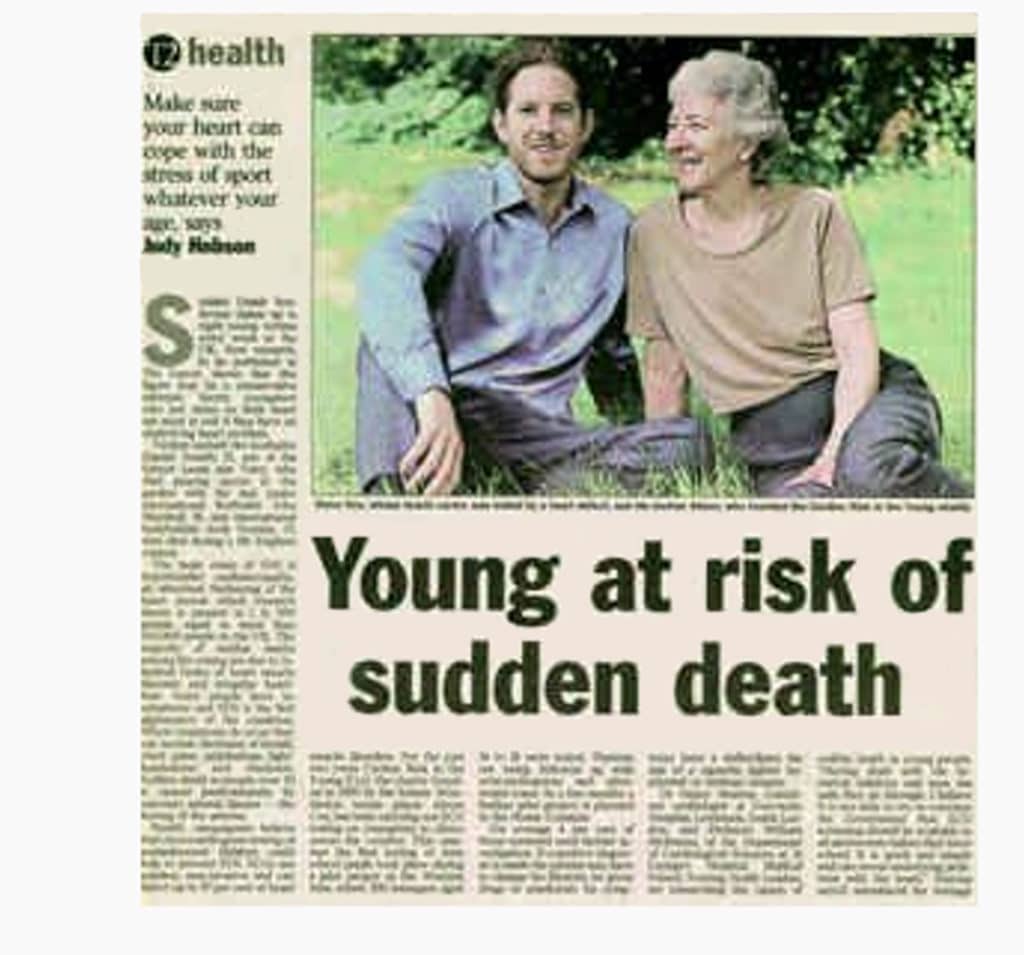This is the third part of CRY’s “Looking Back at 25” series. As we mark our 25th year anniversary, these articles will remember key parts of CRY’s history, and tell the story of how the charity has developed and got to where it is today.
…..
Back when CRY was founded as a charity in 1995 and in the years just before, there was far less awareness of young sudden cardiac death (YSCD) and its incidence. We didn’t have the level of research into YSCD and the conditions that cause it as we do now, and there wasn’t nearly the same amount of press coverage to help inform the general public.
CRY Founder Alison Cox MBE remembered when she first engaged with the press, and when YSCD started getting more coverage:
“It was in the spring of 1992 when I contacted well-known Daily Mail journalist Kate Williams to ask if she would consider doing an article to raise awareness of young sudden cardiac death. She muttered a bit but said if I sent her the information she would see what she could do. In the end, and to my astonishment, she used it for a full page spread and photo.

“People were much more reliant on the press for information in those pre-website days, and the impact of having a whole page spread in a popular newspaper was significant. The great advantage of national newspapers is that not only can the outreach be massive, but the article can be copied and circulated to the relevant interested person or group and used indefinitely. Consequently, the amount learnt from the article can be enormous and provoke a lot of further opportunities to fan out and inspire further discussion. Articles could be stored away for future reference or copied to family and friends.
“The first TV interview I was requested to do was for ITV and was shortly after my son, Steve (now CRY Chief Executive), had been diagnosed with a heart condition (you can read more about this in our first Looking Back at 25 blog post here). The contrast of the impact was enormous. ITV had decided to do a 30-minute programme following the experiences of three families affected by cardiomyopathy which was the only ‘young sudden death’ condition that had been identified at the time. One was a family with several children, two of whom had died suddenly and inexplicably. I clearly recall the father saying that they had been able to accept the first death, as ‘things can happen sometimes without explanation or warning,’ but saying that his second son’s death, ‘took them all by surprise.’ Another family’s child died after their symptoms had been misdiagnosed. Ours was the third family. The difference was that Steve, an athlete, had been in America for college and his condition was recognised and diagnosed.
“ITV decided to make me the ‘link’ person between each story for the programme, which provided me with the opportunity to emphasise how much this was happening and the terrible suffering for the family who were often abandoned because doctors had no answers. Coroners would use the ambivalent verdict of ‘natural causes’ which greatly distressed the grieving family. How could a fit and healthy young person die suddenly and ‘naturally’?
“With television, the impact of seeing the anguish of those affected on screen was very powerful, even though it was only brief. TV was more provocative than reading these stories in a newspaper article. I was able to emphasise the dreadful suffering of not only the sudden and inexplicable loss, but also the lack of information as to what caused the loss, and the terror for the family that it could happen again as no cause had been identified.”
Awareness has improved tremendously over the last 25 years. A lot of this is thanks to extensive research to further our understanding of YSCD (another topic we will be covering in this series!) and its incidence, and awareness raised by increased press coverage and new platforms such as social media.
Within this ongoing remit of working with the media to raise awareness, as CRY has grown, so as our ability to develop a 24/7 press office service, which has made the charity the “go-to” source for reliable information and expert comment for myriad issues relating to YSCD.
As well as a prolific stream of proactive press materials (highlighting family screenings and fundraising events, research papers and policy changes) the team are always contactable to swiftly turn around media requests and ensure CRY’s name remains part of the conversation. Key examples of this you may remember include the sudden collapse of Fabrice Muamba on Saturday March 17 2012 (leading to Dr Steven Cox and Prof Sanjay Sharma taking part in over 80 media interviews within a week!) and more recently, being called upon regularly to comment on decisions taken by the National Screening Committee.
In 2019 alone, CRY was featured in over 700 newspaper and magazine articles, and over 600 online. This development has been so valuable in spreading word of CRY and ensuring as many people as possible are learning about YSCD and the importance of screening.





